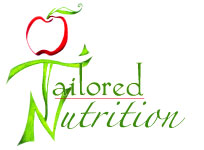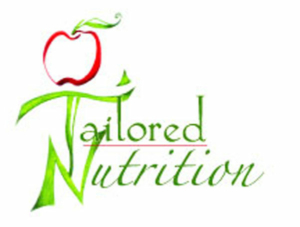Bountiful Baskets- Is it for you?
Bountiful Basket Food Co-op (BBFC) is a novel way to get fresh produce in our community. I myself have enjoyed bountiful baskets. It’s a surprise every week. You never know exactly what will be in your produce basket until you pick it up. It is fun to creatively find ways to incorporate fruits and vegetables I otherwise might not buy into my family’s meals. It feels like it takes the work out of making a choice of what to buy, and gives me more time to put my energy towards how to prepare it. But am I really saving money by choosing Bountiful Baskets? Is it really fresher? And is it really more local??? Well I decided to do some investigating to find out. After picking up my basket for $16.50, I itemized all the products in the basket, and then went to 3 Sheridan grocery sources (Safeway, Wal-Mart, and Warehouse) to compare the price and investigate the ‘freshness’.
Here is what I found:
Am I Saving Money? Yes. About $7.50 for conventional produce. However, this is nowhere near the claim on BBFC’s site. The total cost of the conventional produce at the 3 stores I went to averaged $24.02, not $50.00. As far as the $7.50 savings, that is assuming I wouldn’t shop for local sales and would only pick one grocery store to get all my shopping done at one time. Now if I were to shop like my grandma, it would be a wash because she would go to all 3 stores buying the produce based on who had the sales and cheapest price point. She would get her romaine lettuce at Warehouse, her tomatoes at Safeway, and her cilantro at Wal-Mart. Comparing the lowest price point of all 3 stores combined with my bountiful basket brings the difference to less than $4.40 and that doesn’t take in to consideration shopping for items on sale or membership discounts. If you are willing to shop like my grandma, you don’t need bountiful baskets to save you money, but you do need a lot more time and energy devoted to smart shopping.
Fresher? Probably Not. This would especially be true if you shop for in-season fruits and vegetables. I measured freshness by looking at field to plate times. Bountiful Baskets food distributer Kodiak Fresh Produce in Phoenix, Arizona cannot be guaranteed to beat the field to plate time of our local grocer’s. In general, fresh green vegetable produce in the 3 grocery stores I reviewed is as little as 4 days up to 3 weeks old from harvest to shelf. Produce Manager Logan Killworth reports that Associated Food’s freshness goal a 4-day or less field to store time. Safeway’s customer service center reported field to store times of in-season fruits and vegetables of around 7-9 days. There is no standard requirement for field to store or plate times, as long as USDA grade standards for quality are maintained. These standards are focused on looks and not actual taste or nutritional value. Because of this, some produce out of season could be months old, but preserved with waxes, genetic modifications, and temperature to still ‘look’ fresh. One bite, however, tells another tale. Not only does taste value decrease with time, but also the nutrition value- primarily the phytochemicals and vitamin C.
Local?? Nope. BBFC, ‘choose to use local produce first when available, then regional produce if it is not’. Well, I was able to find more local products at the grocery stores than what was in my basket. For example, there is romaine from Colorado at Wal-Mart, many products from Sheridan County and Montana at Warehouse and Safeway carries some produce items from Colorado. In my bountiful basket, the closest state my produce came from that I could identify was California. My tomatoes came from Mexico L
My Conclusions: Healthy, fun alternative occasionally but I’d rather spend a little more and support local commerce.
Short of your backyard garden and fruit trees, there really is no ideal one-stop shop for produce. Bountiful Baskets has its bonuses. There is some convenient cost-savings, and it is a fun, communal, volunteer event. It’s not necessarily fresher and it is definitely not more local, however. In addition, I like to support our local grocer’s as they support our community. Warehouse Market is deeply vested in Sheridan as they are locally owned and operated. They support Sheridan community in a number of ways- including buying my daughter’s 4-H pig for 3 years in a row! Sheridan’s Wal-Mart, like Safeway, has less control to significantly give back to the community financially given those decisions are made at a corporate level. However, both stores can give product. Megan Carpenter, Wal-Mart’s Produce Manager, reported that they give away >20lb of produce daily to the Salvation Army. They also donate produce 2 x a week to a food bank.
At the end of my investigation, I think I will still occasionally get an organic bountiful basket for fun and time-savings. I will continue to support our local grocer’s, as they support my family and my community. Supporting local is a priority for me. I would much rather spend a few more dollars on healthy locally supplied food and see that money go back into our community. Because of my commitment to our community, I also prioritize not just locally provided, but locally grown foods. In fact, my family is currently enjoying a weekly delivery of locally grown produce from Holliday Family Farms. So yummy and fresh!!! Check them out on facebook.
PS- What about Organic? If you can afford it, choose organic! The more evidence based research I look at, the more convinced I become that organic needs to be a priority. I still say eat your veggies and fruit, whether they are organic or not, but if you can afford it, invest in USDA organic or a local grower who is practicing organic methods. Your endocrine system and liver will thank you. The organic basket is $26.50, and all 3 stores combined could not provide even half of the produce in the organic basket.



